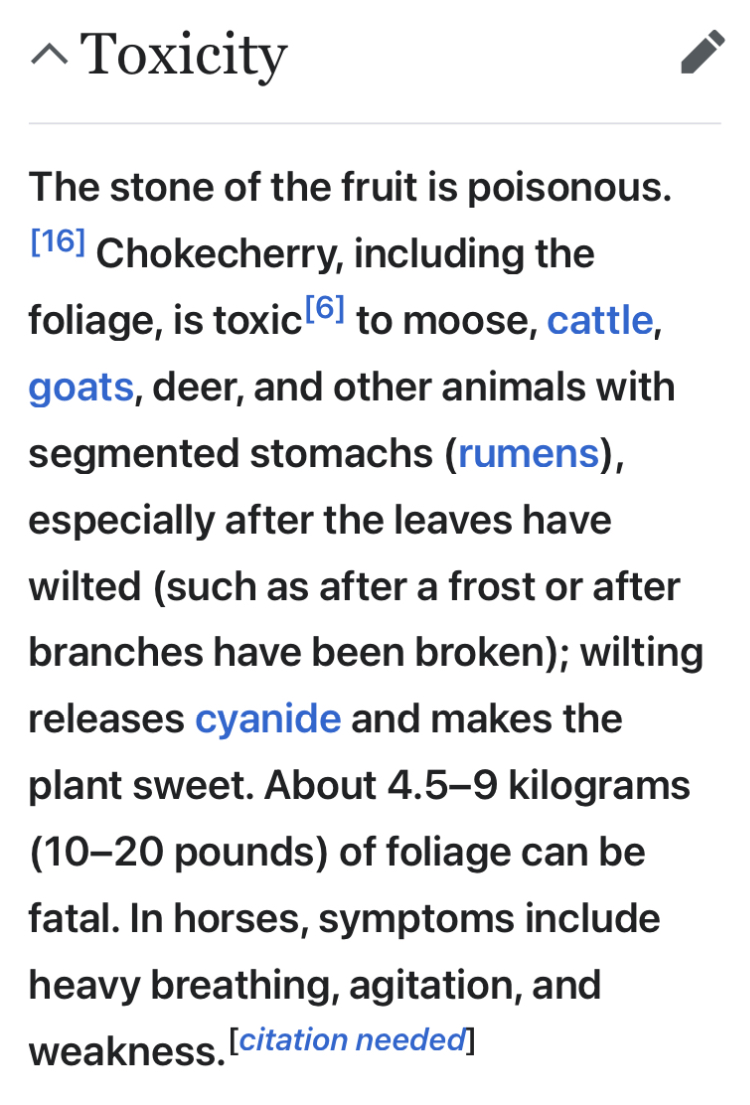I wonder if it amounts to enough to be harmful. I once lived on a property with an extensive orchard that deer would pillage on the regular...
Critters have a way of knowing their limits; those that don’t get eliminated from the gene pool.
I had a college professor whose son vomited and passed out from eating cheery plums, seed and all, from the trees that lined the street on his walk home from school. When he was late getting home, the professor went out and found him and saw the seeds in his vomit. Being a botanist, he recognized the issue right away and rushed him to the hospital. The folks where astonished when he insisted that he was suffering from cyanide poisoning, but quickly listened to his story and did so. The boy responded and recovered.
I have heard all my life that if you ever cut down a cherry tree, make sure your cows don’t have access to the leaves and tender stems. After they wilt a bit, they become lethal to cattle which eat it.
In fact, you can’t even raise a cherry tree in a flood plain. If the root zone stays saturated for even a few days, the trees undergo anaerobic respiration, something many trees can do short term, but with the cyanide in their cells, it hydrolyzes and is lethal to the tree itself.
Of course, cyanide is simply a single carbon triple bonded to a single nitrogen. Our bodies can break down small amounts over time as long as you don’t ingest too much too quickly. Lima beans have cyanide as well as well as most of the seeds of fruits in the Rosacea plant family.
My guess is, most seeds would pass through an animal undigested if they are just eating some of the fruit. My concern is if you were to chop/grind/etc and “mash” them in great quantity, like in the 55 gallon drum OP mentioned, you might get undesirable results. I wouldn’t risk my cows without getting more definitive information first.








![Craft A Brew - Safale S-04 Dry Yeast - Fermentis - English Ale Dry Yeast - For English and American Ales and Hard Apple Ciders - Ingredients for Home Brewing - Beer Making Supplies - [1 Pack]](https://m.media-amazon.com/images/I/41fVGNh6JfL._SL500_.jpg)

















































